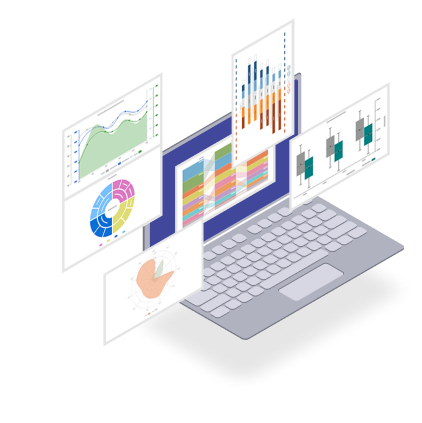Contents
US markets brace for tariff drama: Records, risks, and the waiting game
2 minutes read
07 July 2025

Wall Street is holding its breath this Monday morning. After a week of record-breaking highs, investors now find themselves in a tense limbo. The S&P 500 and Nasdaq have just closed at all-time peaks, but the mood has shifted. With new US tariffs potentially just days away, the market’s recent optimism is giving way to caution and nerves.
It’s a classic case of “calm before the storm.” The US economy delivered a strong jobs report last week, with non-farm payrolls rising by 147,000 in June and unemployment dipping to 4.1%. That news sent stocks soaring, offering a sense of resilience and momentum. But as the holiday weekend faded, attention snapped back to Washington, where President Trump’s administration is weighing new tariffs on major trading partners. The question on everyone’s mind: will the White House pull the trigger, or is this another round of brinkmanship?
Futures signal caution as tariff deadline looms
Before the opening bell, futures for the Dow Jones, S&P 500, and Nasdaq are all pointing lower. Investors are clearly uneasy about the White House’s next move. President Trump’s weekend comments—hinting at tariffs as high as 70% for countries not striking deals with the US—have rattled nerves across the financial world.
“The markets are discounting a return to tariff levels of 35%, 40% or higher, and anticipating an across-the-board level of 10% or so,” says John Pantekidis, chief investment officer at TwinFocus in Boston. This uncertainty is already rippling through global markets. Asian indices opened mixed, and oil prices dipped after OPEC+ announced a surprise production hike. The US dollar, meanwhile, is gaining ground as investors seek safety.
US Treasury Secretary Scott Bessent added to the suspense, saying, “President Trump will be dispatching letters to some of our trading partners indicating that if progress is not made, the tariff levels will revert to those from April 2 on August 1.” For Wall Street, this means more volatility and a market that’s becoming increasingly selective. Defensive sectors like consumer staples are attracting attention, as investors look for shelter from the storm.
Jobs data, inflation fears, and what to watch next
Despite the looming threat of tariffs, the US economy’s recent performance has given investors some comfort. Last week’s jobs report not only beat forecasts but also suggested that the recovery is still on track. “The stronger jobs report led to a notable increase in Treasury yields and tempered expectations for the Federal Reserve to lower interest rates anytime soon,” noted a market analyst on CNBC.
But the mood remains fragile. Goldman Sachs’ chief US equity strategist, David Kostin, points out, “Clients have been keenly focused on who will ultimately shoulder the cost of tariffs,” with many companies expected to pass on higher costs to consumers. As the July 9 tariff deadline approaches, every headline and policy rumour is moving markets—at least in the futures.
For now, Wall Street waits. The opening bell will bring more clarity, but the real story will unfold as the White House reveals its next steps. As one seasoned trader summed up, “The one variable I am watching closely is interest rate levels.” In a market driven by headlines, hope, and high stakes, the waiting game continues.
Disclaimer: The views and recommendations made above are those of individual analysts or brokerage companies, and not of Winvesta. We advise investors to check with certified experts before making any investment decisions.

Ready to own a piece of the world’s biggest brands?
- Invest in 4,000+ US stocks & ETFs
- Fractional investing
- Zero account opening fees
- Secure and seamless
Start investing in just 2 minutes!

Build your global portfolio.
.png)
Invest in companies you love, like Apple and Tesla.

Track, manage, and grow your investments.



